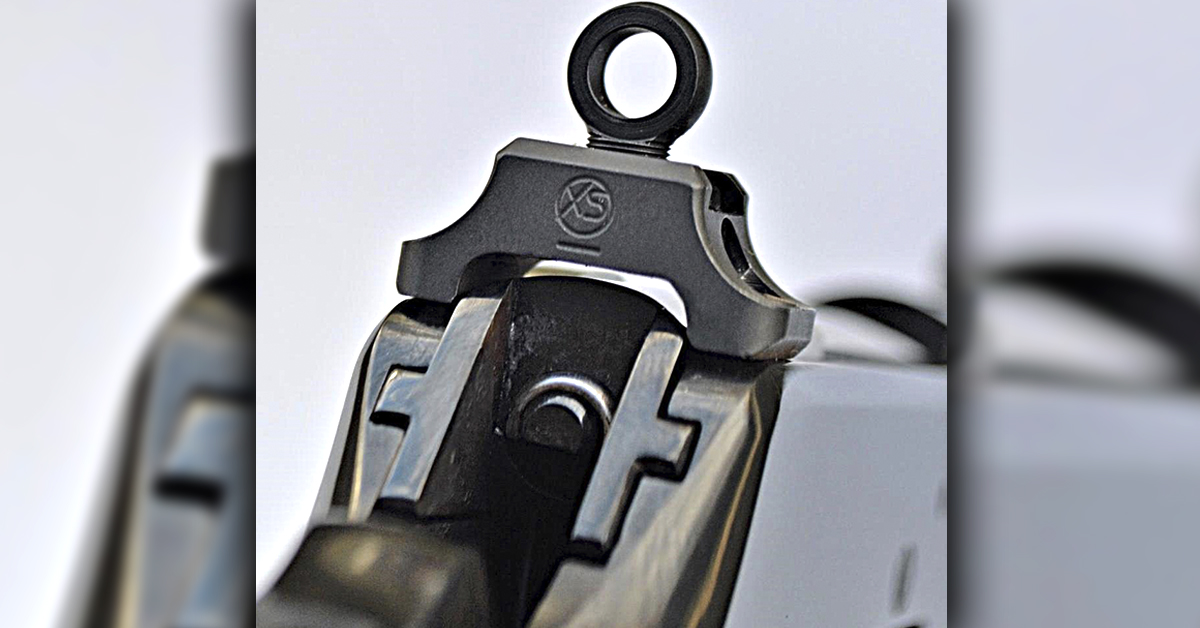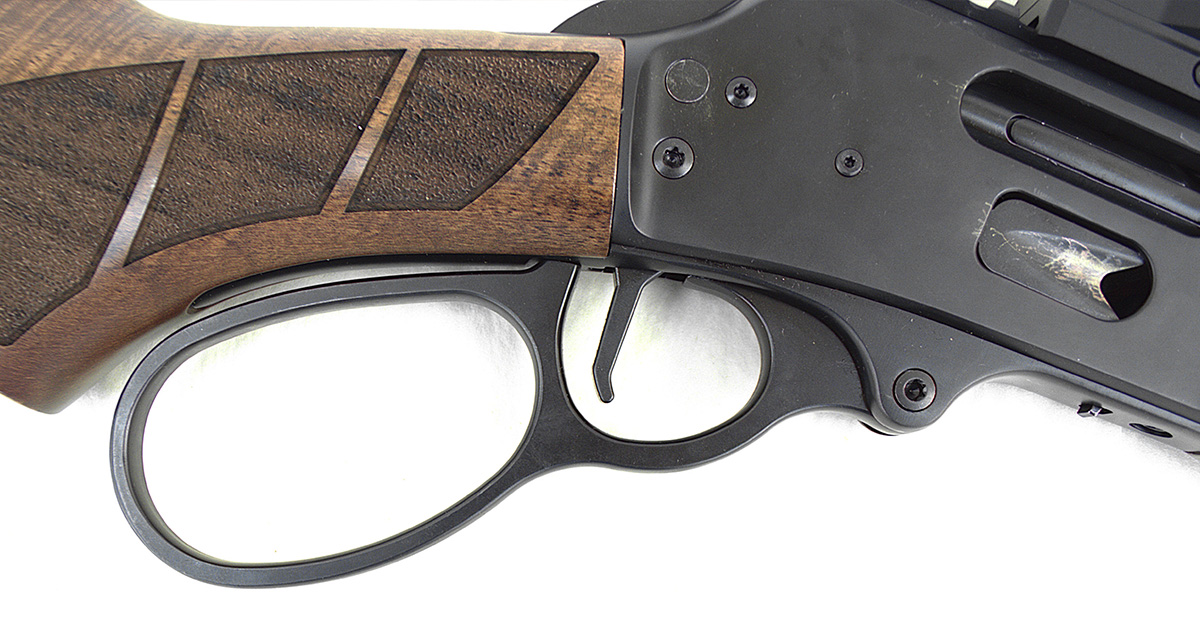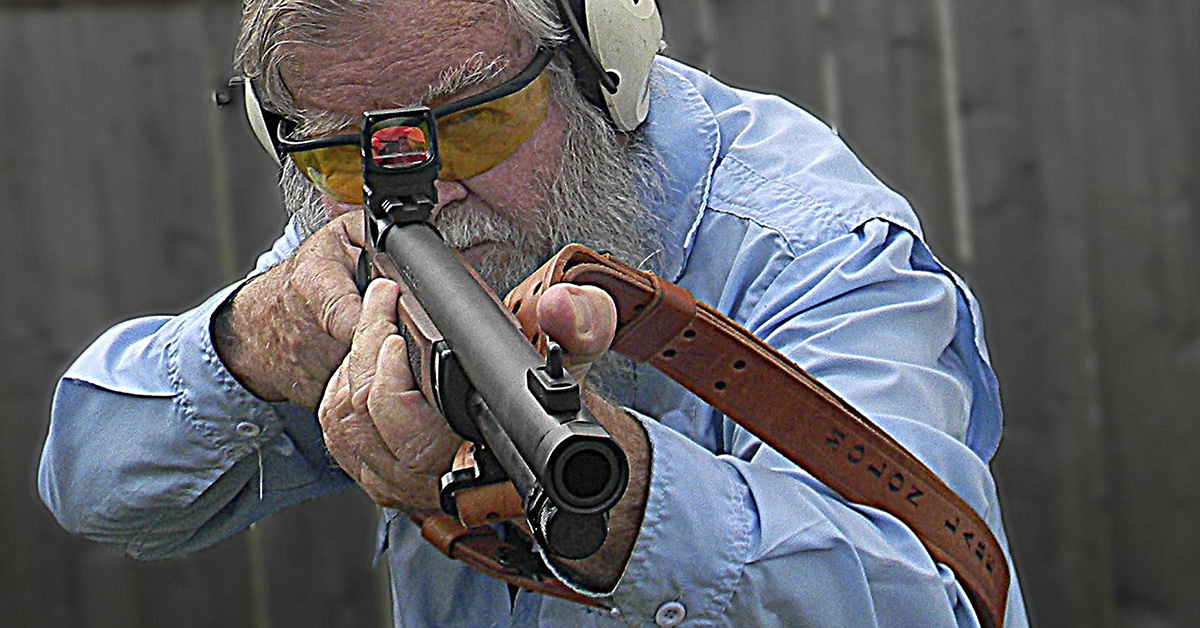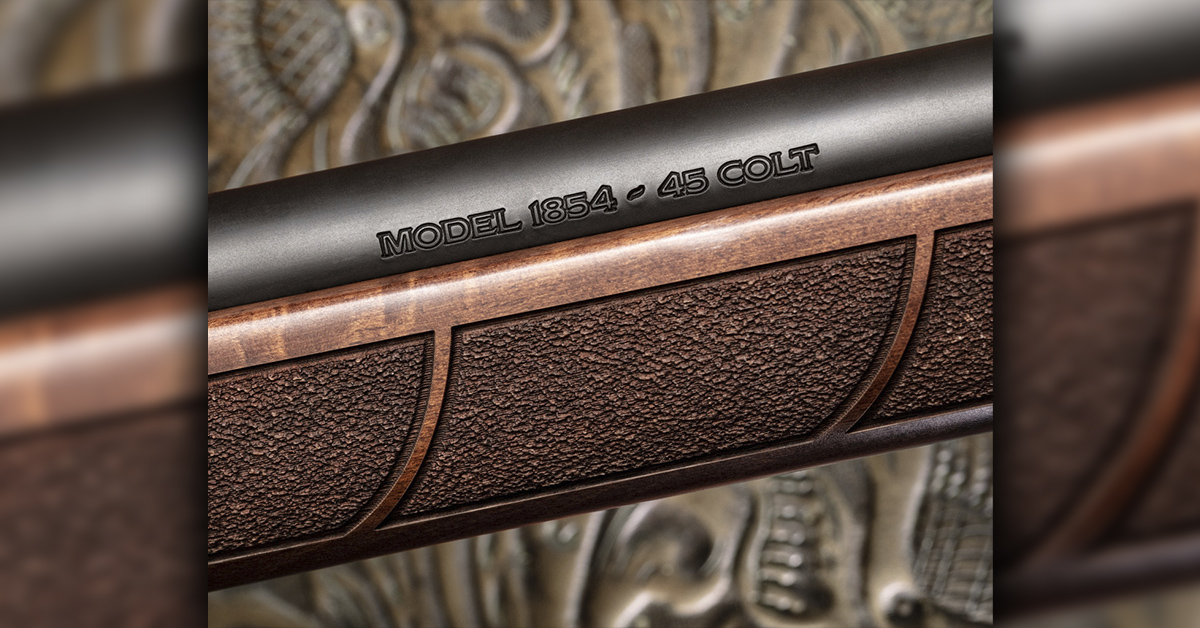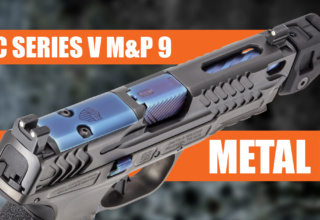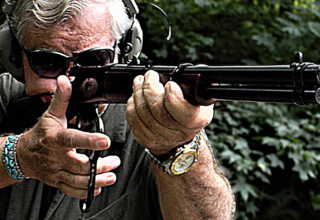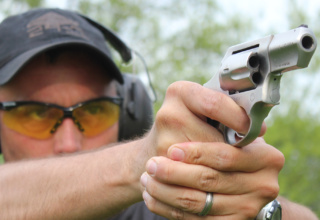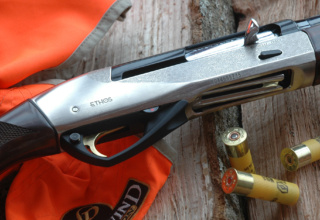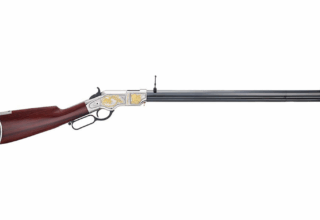S&W expands its new lever-action series with .45 Colt chambering. Modern-day cowboys grin…
by Bob Campbell
A year ago, Smith & Wesson introduced a lever-action rifle I have anticipated for some time. The company, best known for its outstanding revolvers, presented the 1854 chambered in .44 Magnum with a stainless-steel barreled action and synthetic stock. This is a fine all around outdoors rifle in a great caliber. More recently, S&W released a .45 Colt chamber in the same stainless-steel/synthetic configuration as well as a traditional blued barreled action and walnut stock.
The name 1854 refers to the year Smith & Wesson introduced the original Smith & Wesson product — a repeating lever-action pistol called the Volcanic. The Volcanic pistol eventually evolved into the 1860 Henry rifle, but that is another story. If Smith & Wesson offers a pistol version of the 1854, they may call it the Volcanic. Just a thought, but a good one.
The Model 1854 carbine is based on proven lever-action principles. The rifle features a side gate for loading an underbarrel tubular magazine. The bolt lever is pressed forward to move the bolt to the rear, extract and eject a spent case, actuate the follower to feed a fresh round as it is released from the tubular magazine, and the lever brought to the rear to move the bolt forward to chamber a cartridge. The action is fast…very fast in trained hands. If there is a smoother lever-action rifle, I have yet to meet it. While there are lever-action rifles chambered for bottleneck cartridges, a pistol caliber carbine has greater leverage for fast shooting and more positive extraction.
The 1854 is a modern rifle of the best steel. It is capable of handling .45 Colt +P loads as the test rifle demonstrated. The 1854 differs from many lever-action rifles in that the magazine tube may be unscrewed completely and removed to facilitate unloading. In traditional use, the magazine may be topped off by loading cartridges one round at a time into the loading gate. Fire, reload, and keep the 1854 topped off. The original 1854 is chambered in .44 Magnum. So, why the .45 Colt?
The .45 Colt was designed as a revolver cartridge way back in 1873 with the goal of dropping a native war pony at 100 yards with reliability, and the 250-grain, 870 fps load proved up to the task. In many battles, more horses than men died. While a sad waste of horseflesh, the potency of the .45 Colt isn’t to be questioned. Some point out that the .45 Colt isn’t authentic in a lever-action rifle, as the original Winchester and Marlin guns were chambered in .32-20, .38-40, and .44-40. Neither is the .32 H&R Magnum or .454 Casull authentic, but they are very useful.
This isn’t a traditional lever gun. Just the same, for comparison, the .44-40 WCF is in many ways comparable to the 10mm cartridge in ballistics. The WCF cartridges feature a tapered case to ensure feeding reliability. The .45 Colt’s small case rim gave problems in double-action revolvers since there was not enough space for good ejection with a start ejector — it was designed for a button ejector. The cartridge would not have worked well in a lever-action rifle. Modern .45 Colt brass features a wide rim and deeper extraction groove. Chambering and ejection aren’t issues. The straight-walled case is easier to handload than the .44-40. The .45 Colt’s versatility includes loading powderpuff Cowboy Action Loads all the way up to +P loads capable of taking on the largest North American game. With some regarding the 1854 as an ideal survival rifle, the .45 Colt makes sense.
One of the best features of the 1854 is its 19.25-inch heavy barrel. This barrel is optimally balanced and offers good heft when firing from the shoulder. The wood furniture is well finished and hosts border checkering. The finely cut checkering is exceptional, offering a good balance of adhesion and abrasion. The enlarged lever offers excellent control coupled with a semi-pistol grip. The hammer is regarded as a safety to be cocked when you are ready to fire. The action may be operated whether the hammer is down, at half cock, or full cock. There is a cross-bolt safety typical of modern lever-action rifles. Don’t dry fire with the safety off or the hammer may be damaged.
I have added XS Sights rail and peep sights to lever-action rifles over the years with excellent results. The Smith & Wesson 1854 arrived with the XS sight and rail mounted. If needed, you may mount an optic — either a rifle scope or a red dot sight.
The muzzle is cut with an 11/16-24 thread should you elect to go quiet with a suppressor or mount a muzzle brake.
I have occasionally modified loading gates by clipping springs to make for easier loading. The 1854 loading gate is positive in operation. While unscrewing the loading tube was fine for most of the test period, I used the loading gate. Predictably, the loading gate was scuffed by bullet noses during the test. All lever-action rifles show this wear to different degrees.
There is plenty of leverage for the hammer to be easily cocked for firing. There is a half-cock or safety position available.
The flat faced trigger also offers excellent leverage. This is a modern design that is superior to the traditional curved trigger. Initially, the trigger broke at a clean 4.0 pounds. After a few weeks of use, the trigger settled into a crisp 3.75 pounds.
The rounded, slightly enlarged lever-action loop works well with gloved hands. The rifle features a nice recoil pad that proved appropriate for use with the heavier class of .45 Colt loads. Length of pull is 13.25 inches. The 1854 rifle is light enough at a well-balanced 6 pounds and 12 ounces. It is good to go as unboxed, with good sights, a sight rail, threaded barrel, and a big loop.
I had a surprising amount of .45 Colt ammunition in the ammunition larder, including handloads with hard cast bullets using different types of powder.
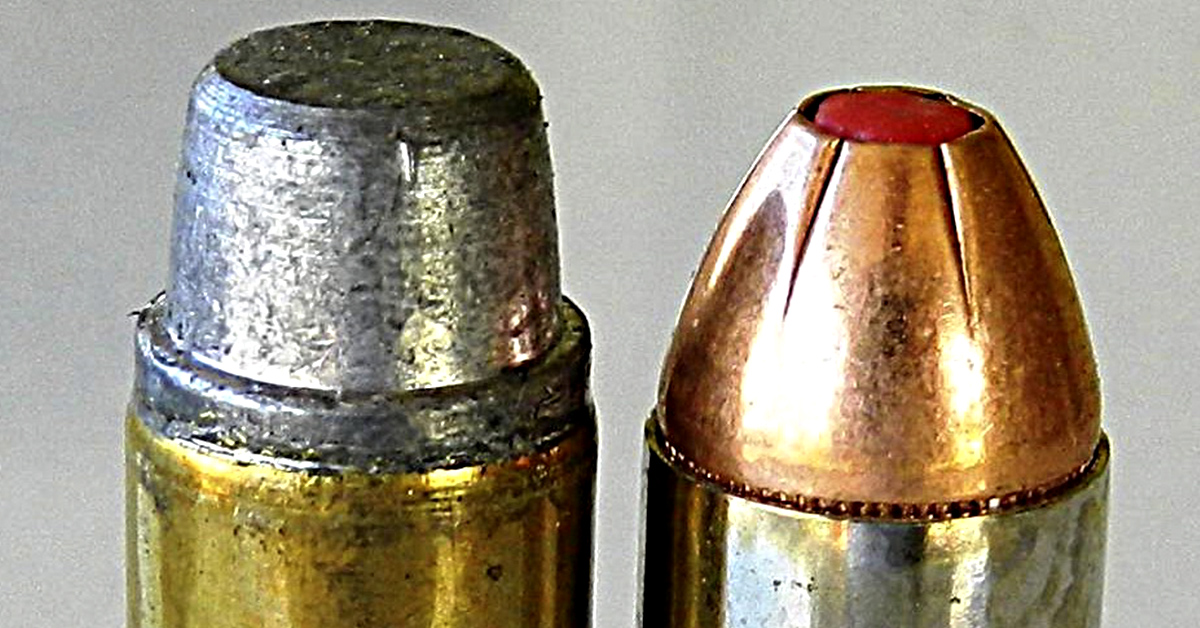
A caution on light loads: the .45 Colt (and other pistol calibers in carbines) features a thick case. At low pressure, the cartridge case does not expand to the chamber. The result is gas blowby. This is why fired cases in revolvers have a smokey look from unburned powder. In the carbine, powder gas is blown in the face as well. With factory loads, some types of cowboy action loads well suited for revolver use produce blowback or blowby in the carbine. Rather than use a load that develops 750 fps in a handgun, a loading that averages 850 fps with a 250-grain hard cast bullet in the revolver is suitable for the carbine. This load will average 900 fps in the carbine — plenty for practice and accuracy testing.
I found a sweet spot with loads on hand and worked through them with blowback. I fired 125-grain cartridges from “old stock.” The results were good. The 1854 is a joy to fire and use. Recoil is modest, with a sensation of a light push. I fired most of the loads in rapid fire at 25 yards offhand at man-sized targets. To use the aperture sight, simply look through the rear peep. The tendency is for the eye to center the front sight in the aperture. Very good shooting may be done with this type of sight. I also took shots off-hand at 50 yards in an unscientific and immensely satisfying firing test, and then moved to 100 yards. The rifle is plenty accurate in practical offhand fire.
I fired for accuracy from a benchrest with heavier loads using a medium charge of WW 231 powder. The 250-grain loads went into an inch or less at 25 yards. These results from initial testing were encouraging. The next step was long-range fire. In this case, I began at 50 yards, carefully sighting the rifle in. I used factory loads to remove any unknown criteria. Several three-shot groups fell into 2.0 inches. The 1854 seemed indifferent regarding jacketed or lead loads.
As I continued to fire the rifle, I came to appreciate its easy handling and well-thought-out features. If you need an all-around survival rifle suitable for home defense, area defense, and protection against wild animals, the 1854 is a superb choice. But it must be useful at more than 50 yards.
To further explore performance, I mounted a Bushnell RXM red dot. Firing quickly at man-sized targets from 25 to 50 yards with both eyes open confirmed that the Bushnell/S&W combination is a formidable defense option. Turning the sight down to the lowest illumination, I sighted the RXM in at 25 then 50 yards, and next mounted a large target with a bright orange center at 100 yards. I took aim with the Buffalo Bore 255-grain load. From the bench, recoil was more noticeable than firing offhand, but never uncomfortable.
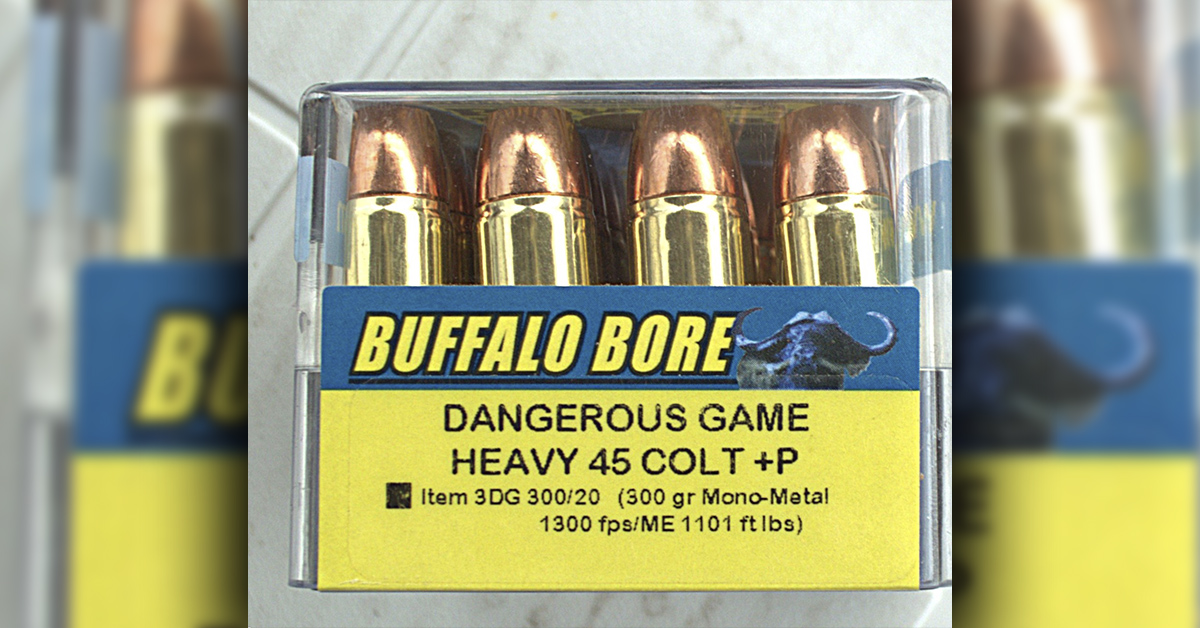
The Buffalo Bore load put three holes into the paper with a span of 3.5 inches. The Buffalo Bore JHP 225-grain Barnes load was similar with a best effort of 3.75 inches. At this range, drop was telling with the slower standard loads, yet most were capable of a four-inch group. The 1854 rifle is an accurate rifle and does credible work with a cartridge introduced in 1873 and modernized by cartridge makers. This is an easy shooting combination — plenty hard-hitting with the right load. I like the 1854 a great deal. It is a dream come true for many lever-action fans and a rifle with commendable performance.
Here are some velocity figures using a good mix of ammunition…
- Buffalo Bore 225-grain SWC HP: 1160 fps
- Buffalo Bore 255-grain Outdoorsman: 1209 fps
- Buffalo Bore 300-grain Dangerous Game +P: 1457 fps
- Winchester Super X Silvertip 225-grain: 1011 fps
- Remington HTP 230-grain JHP: 1080 fps
- SIG V Crown 230-grain: 921 fps
Comparison in a 4.75-inch barrel revolver…
- Buffalo Bore 255-grain Outdoorsman: 1,004 fps
- Buffalo Bore 225-grain LSWCHP: 990 fps
- Winchester Super X 255-grain lead: 707 fps
- SIG 230-grain JHP: 720 fps
Some figures on drop with a 25-yard zero and standard 1,000 fps 250-grain load…
- 50 yards: -.92
- 75 yards: -3.65 in.
- 100 yards: -8.36 in.
- 150 yards: -24 in.
With the Buffalo Bore hunting loads, it is a different story. Be certain to be familiar with the load you deploy! This is why the rifle should be sighted for the expected distance, and you should fire enough to be familiar with its point-of-impact at longer range. I recommend a 100-yard zero. A great advantage of the .45 Colt, for my use, is that intermediate loads are readily available. The .44 Magnum is a credible cartridge, true, but the .44 Special is underloaded. You may load standard pressure .45 Colt to defend the home, but you may also take heavy game with the rifle.
The .45 Colt is well suited to taking deer-sized game and wild boar to 100 yards. While some would rate it a 150-yard game-taker with heavy loads, such as the Buffalo Bore, the 1854, like any other rifle, demands practice and attention to detail. I have taken deer and boar with this class of load with handguns, and it was four feet in the air, complete penetration, and eating right up to the bullet hole.
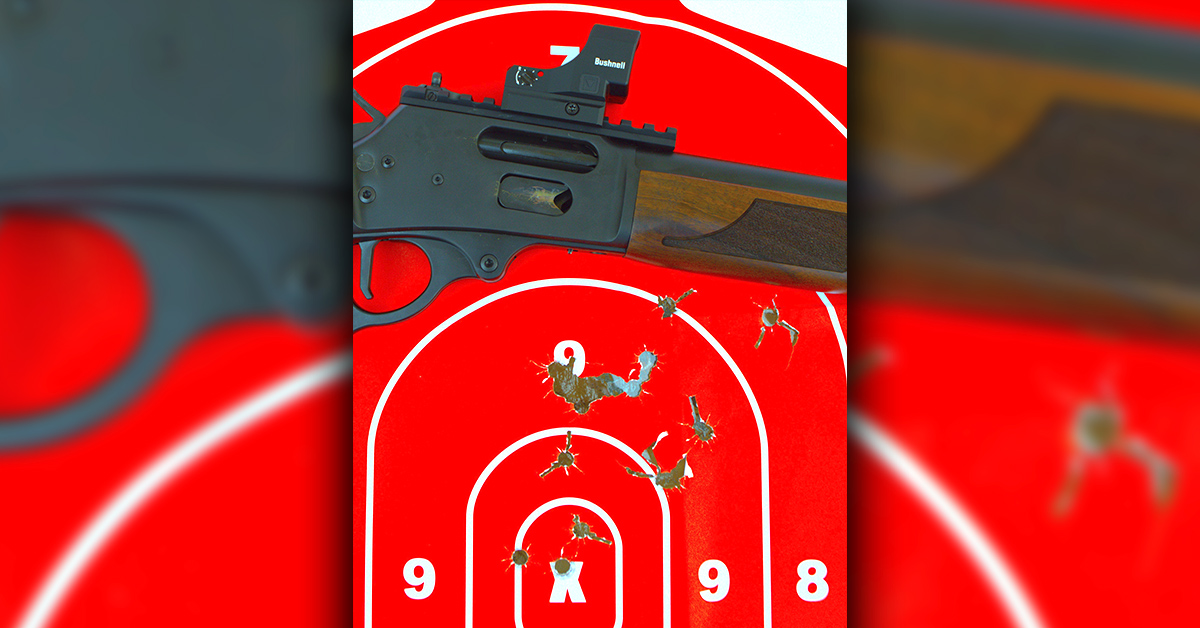
As for personal defense, this is a heck of a carbine. There are few with such versatility. I would recommend a good quality hollow point, such as the Remington 230-grain JHP or Buffalo Bore 225-grain LSWCHP. In personal defense use, practically any full-power load is effective to 100 yards. The heavier loads are not necessary for defense but neither are the CAS loads appropriate for personal defense. Then again, it depends how much cover or metal might be shielding the threat. A medium-power loading should be ideal. For hunting, it depends on the game. For thin-skinned game and boar, the Buffalo Bore loads are ideal. The rifle represents a great deal of versatility. Lever-action fans never had it so good.
What I Like
- The rifle is reliable without any hang ups of any type with SWC, hollow point, or JSP ammunition. The 1854 is more accurate than most lever-action rifles and chambers a powerful cartridge well suited to defense or hunting. Versatility is excellent.
What I Don’t Like
- I could have done without the manual safety. But then, some will use it. Ignore it, but don’t remove the safety.
What I Would Change
I don’t care for the removable magazine tube. I would delete the safety in new production, but I would never deactivate a safety device on an existing firearm.
Compare To
- The Smith & Wesson is smoother than older Marlins, in my opinion, and at least as smooth as the modern Marlin/Ruger rifles. The piece is much stronger than lever-action rifles based on the Winchester action. The good old 1892 rifles by any maker are not in the class with this rifle in accuracy and handling and are more difficult to mount an aperture sight. I think the Henry is its closest competitor in many ways.
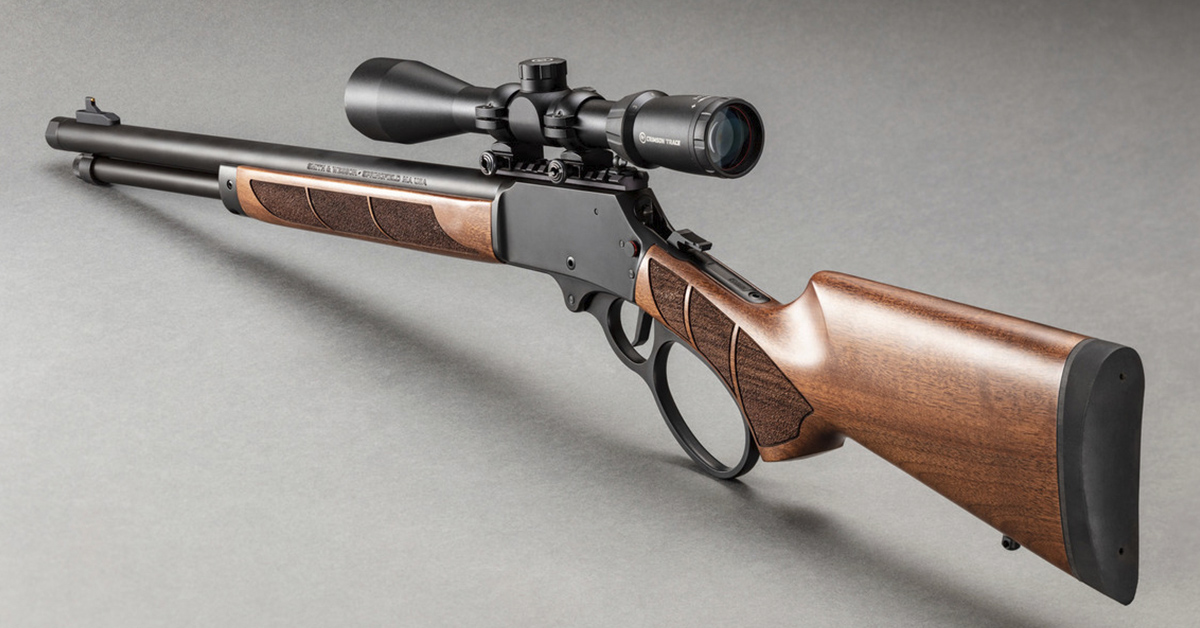
S&W 1854 .45 Colt Specifications
- Action: lever
- Caliber: .45 Colt
- Barrel Length: 19.25 in.
- Magazine Capacity: 9
- Furniture: Walnut
- Sights: optic-ready; rear aperture, front brass bead
- Safety: cross-bolt
- Weight: 6 lbs., 12 oz.
- Width: 1.6 in.
- Length: 36 in.
- MSRP: $1399.00



